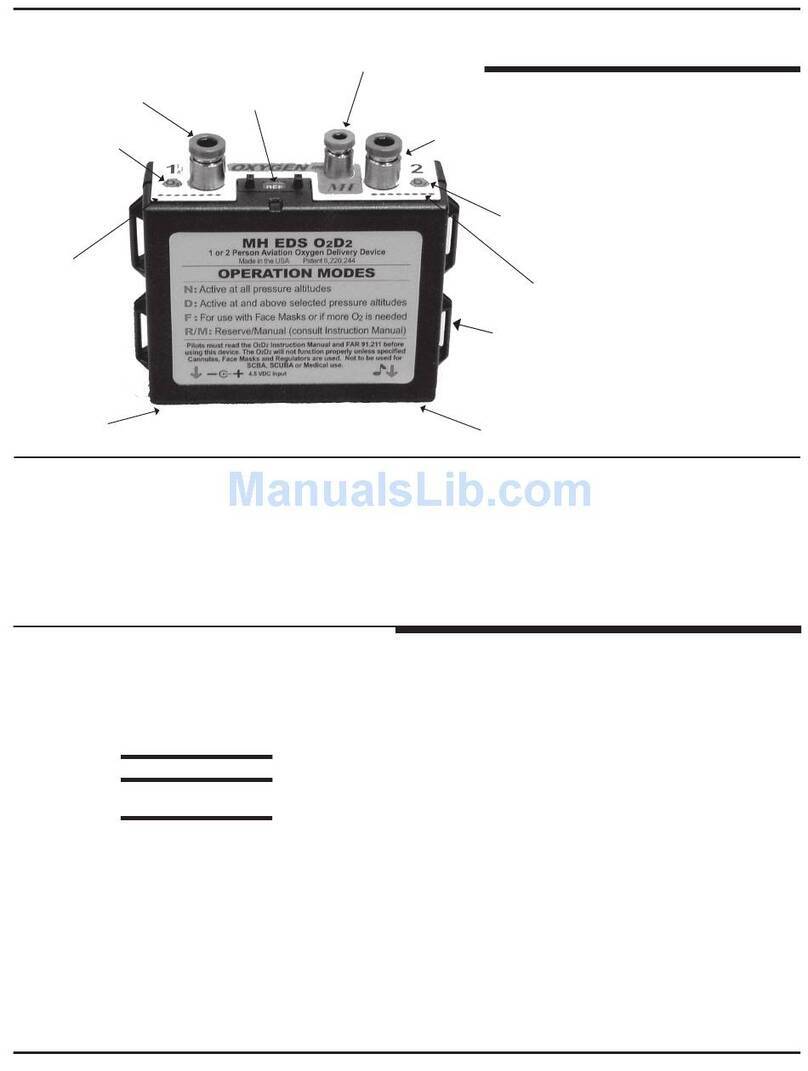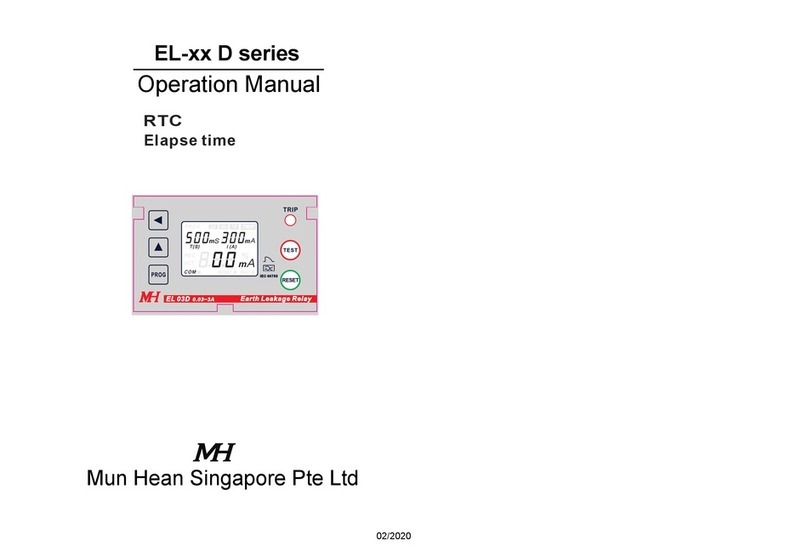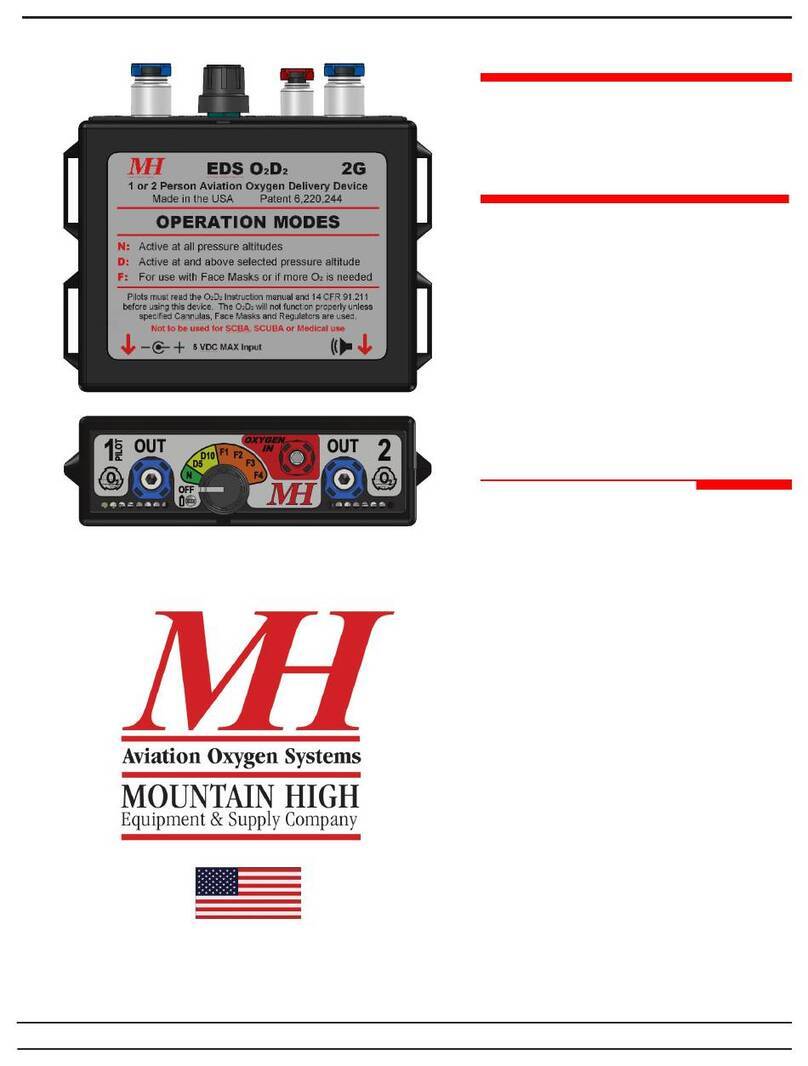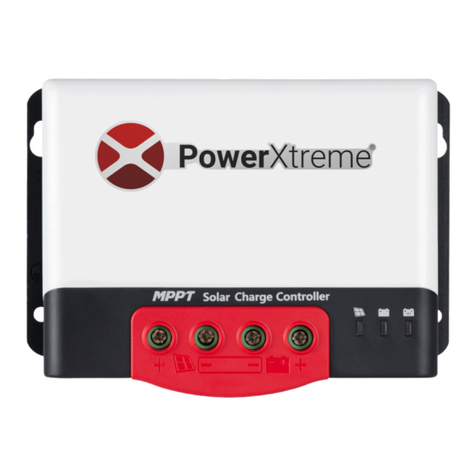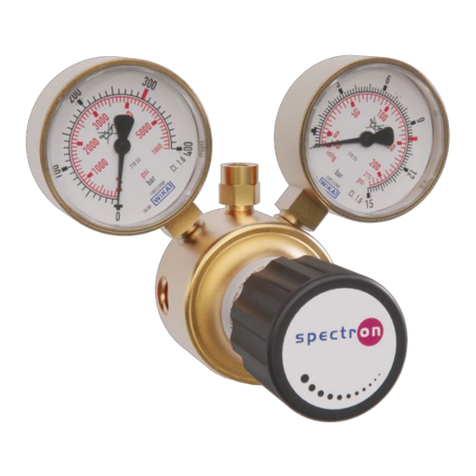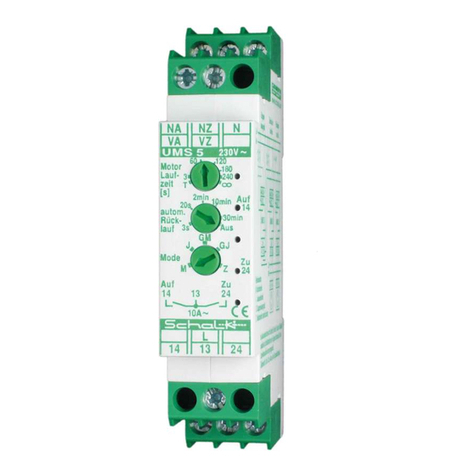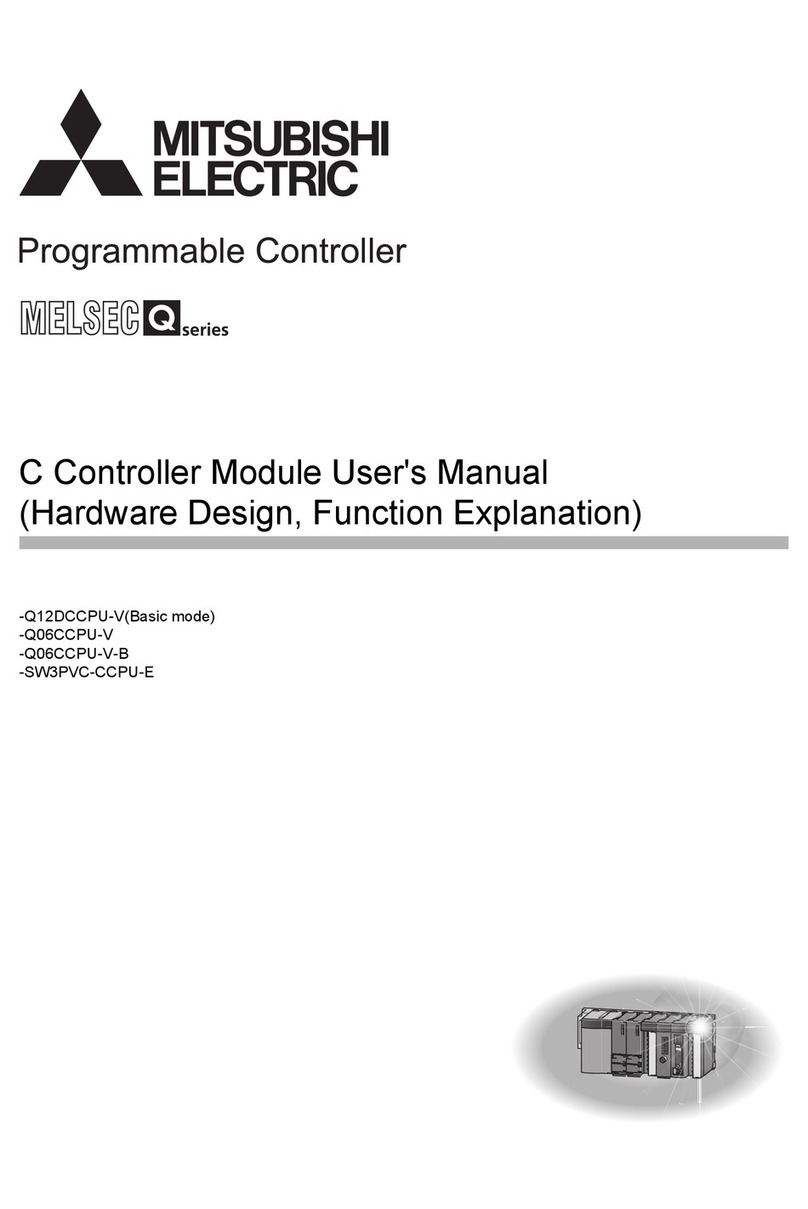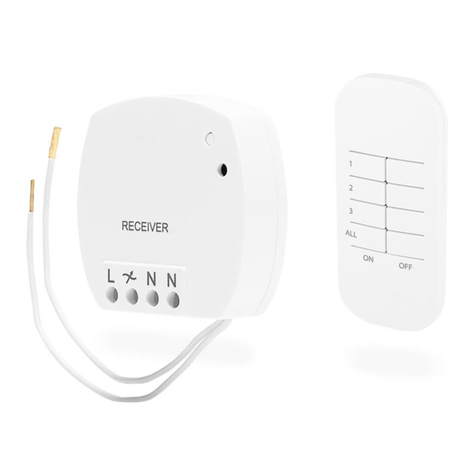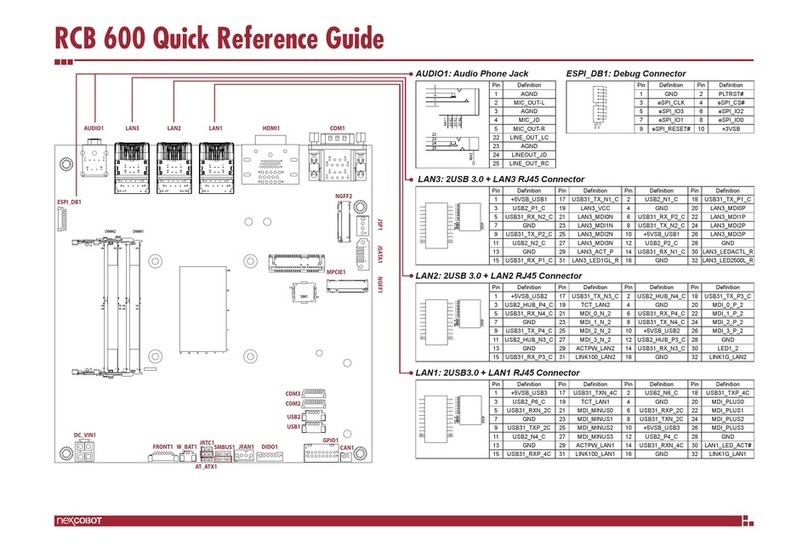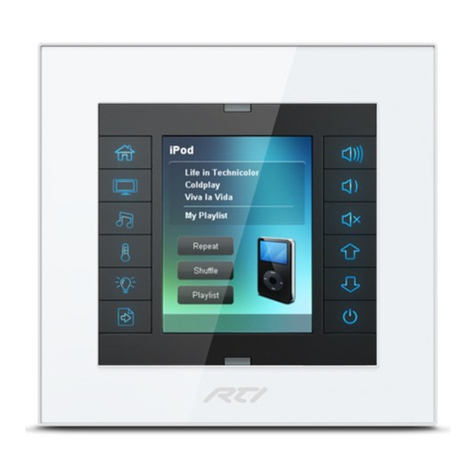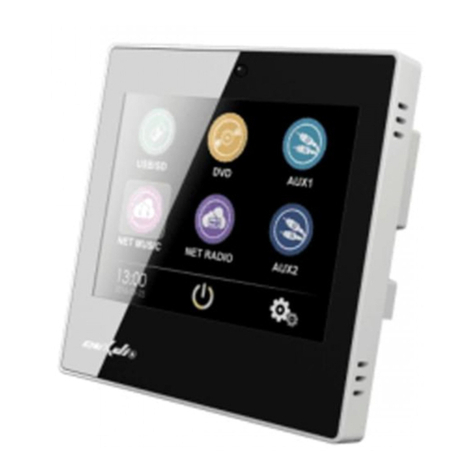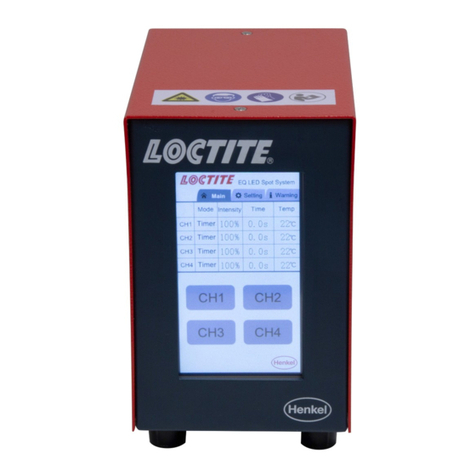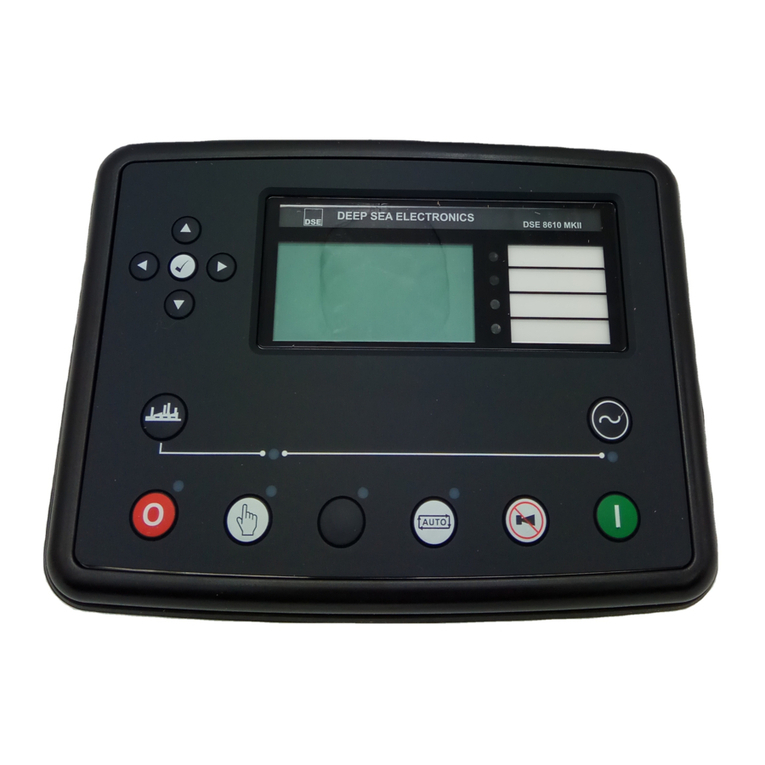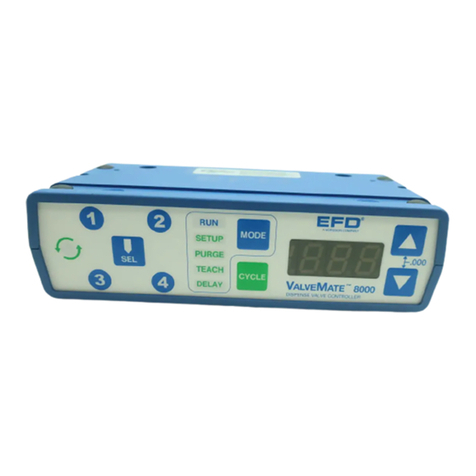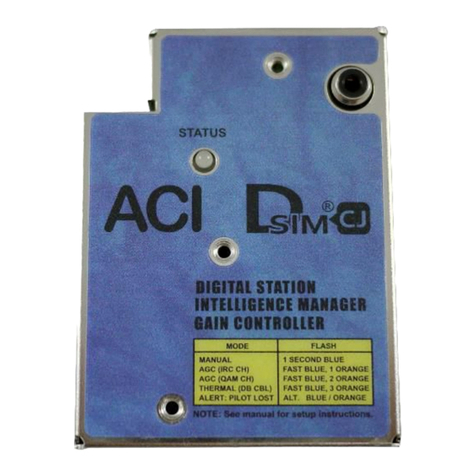MH THYROMAT-BDC User manual


U
Us
se
er
r
M
Ma
an
nu
ua
al
l
Revision 8.6 INDEX 1
THYROMAT BD DIGITAL CRANE CONTROLLER
TABLE OF CONTENTS
SECTION PAGE
1. GENERAL
1.1. CONTROL SYSTEM..................................................................................................................... 6
1.1.1. Basic System Diagram............................................................................................................. 8
1.1.2. Thyromat Components Identification ....................................................................................... 9
2. SYSTEM DESIGN
2.1. GENERAL ................................................................................................................................... 10
2.2. THYROMAT –BD DIGITAL CRANE CONTROLLER RANGE................................................... 10
2.3. PROTECTION............................................................................................................................. 12
2.4. THYROMAT –BD DIGITAL CRANE CONTROLLER SELECTION........................................... 12
2.4.1. Standard Duty ........................................................................................................................ 12
2.4.2. Severe Duty (Based on 40% of nominal load permanently on hook) .................................... 13
2.5. PRINCIPLE OF OPERATION ..................................................................................................... 14
2.5.1. Control Box............................................................................................................................. 15
2.5.2. Control Card........................................................................................................................... 15
2.5.3. Relay Card ............................................................................................................................. 16
2.5.4. Phase Shifter Card................................................................................................................. 16
2.5.5. Snubber Card......................................................................................................................... 16
2.5.6. Control Panel.......................................................................................................................... 16
2.6. CONTROL SYSTEM SPECIFICATIONS.................................................................................... 17
2.7. THYROMAT - BD DIGITAL CRANE CONTROLLER ENCLOSURES........................................ 18
2.8. SELECTION OF RESISTORS.................................................................................................... 19
2.9. SELECTION OF MAINS CIRCUIT BREAKERS......................................................................... 21
2.10. SELECTION OF INTERPOSING INPUT RELAYS..................................................................... 23
2.11. SELECTION OF INTERPOSING OUTPUT RELAYS................................................................. 23
2.12. SELECTION OF CABLES........................................................................................................... 24
2.12.1. Power Supply Cables............................................................................................................. 24
2.12.2. Control Supply Cables............................................................................................................ 24
2.13. SELECTION OF STATOR REVERSING CONTACTORS.......................................................... 24
2.13.1. Contactor Switching Times .................................................................................................... 25
2.13.2 Contactors Drop Out Times ................................................................................................... 25
2.14. SELECTION OF CURRENT TRANSFORMERS........................................................................ 25

U
Us
se
er
r
M
Ma
an
nu
ua
al
l
Revision 8.6
INDEX
2
SECTION PAGE
2.15. SELECTION OF ROTOR CONTACTORS.................................................................................. 26
2.15.1. Star Connections.................................................................................................................... 26
2.15.2. Delta Connections.................................................................................................................. 26
2.15.3. V Connections........................................................................................................................ 27
2.15.4 W Connections....................................................................................................................... 27
2.16. MOTOR THERMAL PROTECTION UNIT................................................................................... 27
2.17. SELECTION OF SPARE PARTS................................................................................................ 28
3. PARAMETERS
3.1. HOIST APPLICATION PARAMETER LIST ................................................................................ 29
3.2. PARAMETER DESCRIPTIONS - HOIST.................................................................................... 30
3.2.1. CT Ratio ................................................................................................................................. 30
3.2.2. Motor Current ......................................................................................................................... 31
3.2.3. Overload Class....................................................................................................................... 31
3.2.4. Notch 1................................................................................................................................... 32
3.2.5. Notch 2................................................................................................................................... 32
3.2.6. Notch 3................................................................................................................................... 32
3.2.7. Hoist Plugging........................................................................................................................ 32
3.2.8. Hoist Plugging V..................................................................................................................... 33
3.2.9. Lower Plugging V ................................................................................................................... 34
3.2.10. Brake Release I...................................................................................................................... 34
3.2.11. Hoist Start Volt ....................................................................................................................... 34
3.2.12. Stop Delay.............................................................................................................................. 35
3.2.13. Lower Plug Out....................................................................................................................... 35
3.2.14. Max Stall Volts........................................................................................................................ 35
3.2.15. Ph Shift On Time.................................................................................................................... 36
3.2.16. Ph Shift Off Time.................................................................................................................... 37
3.2.17. Separate Directional Signals.................................................................................................. 38
3.2.18. Load Defaults......................................................................................................................... 39
3.3. TRAVEL APPLICATION PARAMETER LIST ............................................................................. 40
3.4. PARAMETERS DESCRIPTIONS - TRAVEL.............................................................................. 41
3.4.1. Current Transformer Ratio ..................................................................................................... 41
3.4.2. Current Transformer Enable .................................................................................................. 41
3.4.3. Motor Current ......................................................................................................................... 42
3.4.4. Overload Class....................................................................................................................... 42
3.4.5. Notch Speed 1........................................................................................................................ 43
3.4.6. Notch Speed 2........................................................................................................................ 43

U
Us
se
er
r
M
Ma
an
nu
ua
al
l
Revision 8.6 INDEX 3
3.4.7. Notch Speed 3........................................................................................................................ 43
SECTION PAGE
3.4.8. Notch Plugging....................................................................................................................... 43
3.4.9. Notch Plugging V.................................................................................................................... 43
3.4.10. Neutral Plugging V ................................................................................................................. 44
3.4.11. Neutral Deceleration Profile ................................................................................................... 44
3.4.12. Brake Plugging Volts.............................................................................................................. 44
3.4.13. Brakes on Speed.................................................................................................................... 45
3.4.14. Max Stall V ............................................................................................................................. 45
3.4.15. Min Start V.............................................................................................................................. 45
3.4.16. Notch 1; 2 and 3 Acceleration Time....................................................................................... 46
3.4.17 Notch 4_Accel Profile............................................................................................................. 46
3.4.18. Phase Shifter Off Time........................................................................................................... 46
3.4.19 Notch 4 Accel Delay............................................................................................................... 47
3.4.20. Separate Directional Signals.................................................................................................. 47
3.4.21. Plug Reduced %SP................................................................................................................ 48
3.4.22. Notches1,2 & 3 Smooth Prfl................................................................................................... 48
3.4.23. Brake Plug Soft ...................................................................................................................... 49
3.4.24. Load Defaults......................................................................................................................... 49
3.5. TORQUE APPLICATION PARAMETER LIST.............................................................................50
3.6. PARAMETER DESCRIPTIONS –TORQUE................................................................................51
3.6.1. Current Transformer Ratio ..................................................................................................... 51
3.6.2. Current Transformer Enable .................................................................................................. 51
3.6.3. Motor Current ......................................................................................................................... 52
3.6.4. Overload Class....................................................................................................................... 52
3.6.5. Notch 1 Voltage...................................................................................................................... 53
3.6.6. Notch 2 Voltage...................................................................................................................... 53
3.6.7. Notch 3 Voltage...................................................................................................................... 53
3.6.8. Notch 4 Voltage...................................................................................................................... 53
3.6.9. Notch 1 Plugging.................................................................................................................... 53
3.6.10. Notch 2 Plug........................................................................................................................... 53
3.6.11. Notch 3 Plug........................................................................................................................... 53
3.6.12. Notch 4 Plug........................................................................................................................... 53
4. INSTALLATION
4.1. GENERAL INSTALLATION......................................................................................................... 54
4.2. THYROMAT - BD DIGITAL CRANE CONTROLLER MECHANICAL INSTALLATION.............. 54
4.2.1. General................................................................................................................................... 54
4.2.2. Mounting Instructions............................................................................................................. 54

U
Us
se
er
r
M
Ma
an
nu
ua
al
l
Revision 8.6
INDEX
4
4.2.3. Tools and Special Equipment ................................................................................................ 55
SECTION PAGE
4.2.4. Mounting Arrangements......................................................................................................... 56
4.2.5. Mounting Procedure............................................................................................................... 58
4.3. ELECTRICAL INSTALLATION.................................................................................................... 59
4.3.1. General................................................................................................................................... 59
4.3.2. Electrical Connection Instructions.......................................................................................... 60
4.3.3. Tools and Special Equipment ................................................................................................ 64
4.4. INSTALLATION DIAGRAMS....................................................................................................... 64
4.4.1 Digital Inputs –Main Board.................................................................................................... 65
4.4.2. Digital Inputs –Connectors on the Control Panel.................................................................. 66
4.4.3. Relay Outputs –Connectors on the Main Board .................................................................... 66
4.4.4. Triac Outputs –Control Panel Board..................................................................................... 67
4.4.5. Motor Current Inputs .............................................................................................................. 68
5. COMMISSIONING
5.1. GENERAL ................................................................................................................................... 69
5.2. PREPARATION........................................................................................................................... 69
5.3. COMMISSIONING PROCEDURES............................................................................................ 70
5.4. HOIST OPERATIONS................................................................................................................. 75
5.4.1. Hoisting .................................................................................................................................. 75
5.4.2. Lowering With an Overhauling Load...................................................................................... 75
5.4.3. Regeneration.......................................................................................................................... 75
5.4.4. Lowering With a Light Load.................................................................................................... 75
5.5. TRAVEL OPERATIONS.............................................................................................................. 76
5.5.1. Travel in All Directions............................................................................................................ 76
6. OPERATION OF CONTROL PANEL
6.1. GENERAL ................................................................................................................................... 77
6.2. SUPPLEMENTRY DISPLAY PAGES “SCROLL MENU”............................................................ 78
6.2.1. Parameters............................................................................................................................. 78
6.2.2. Set Time................................................................................................................................. 79
6.2.3. Fault History ........................................................................................................................... 79
6.3. KEY PAD PUSH BUTTONS........................................................................................................ 79
6.4. CONTROL PANEL OPERATION................................................................................................ 80
6.5. PARAMETER LISTS PAGE........................................................................................................ 81
6.5.1. Accessing the Parameters Page............................................................................................ 81
6.6. SET TIME PAGE......................................................................................................................... 82
6.7. FAULT HISTORY........................................................................................................................ 83

U
Us
se
er
r
M
Ma
an
nu
ua
al
l
Revision 8.6 INDEX 5
SECTION PAGE
6.8. POSSIBLE CAUSES OF FAILURE............................................................................................. 85
6.8.1. Rotor Feedback...................................................................................................................... 86
6.8.2. Current Unbalance................................................................................................................. 87
6.8.3. Loss of Phase......................................................................................................................... 88
6.8.4. Current Feedback................................................................................................................... 88
6.8.5. Stack Temp ............................................................................................................................ 89
6.8.6. Overload Trip.......................................................................................................................... 89
6.8.7. Over Current........................................................................................................................... 89
6.8.8. H Loss of Torque.................................................................................................................... 90
6.8.9. Lower Overspeed................................................................................................................... 90
6.8.10. Motor Stall .............................................................................................................................. 91
6.8.11. Input Phases .......................................................................................................................... 91
6.8.12. Plugging Timeout ................................................................................................................... 91
6.8.13. Joystick Error.......................................................................................................................... 92
6.8.14. RFB & Current Loss............................................................................................................... 92
6.8.15. Not in Neutral ......................................................................................................................... 93
6.8.16. Drive Level ............................................................................................................................. 93
6.8.17. Power ON Test....................................................................................................................... 93
6.8.18. Break Release........................................................................................................................ 94
6.8.19-24. Error Codes.........................................................................................................................95
7. MAINTENANCE
7.1. GENERAL ................................................................................................................................... 96
7.2. PREVENTATIVE MAINTENANCE.............................................................................................. 96
7.2.1. Brakes .................................................................................................................................... 96
7.2.2. Ultimate Limit Switch.............................................................................................................. 97
7.3. SPARE PARTS LIST................................................................................................................... 97
8. SHIPPING AND STORAGE
8.1. GENERAL ................................................................................................................................. 100
8.1.1. Shipping ............................................................................................................................... 100
8.1.2. Storage................................................................................................................................. 100
9. ACRONYMS AND ABREVIATIONS
9.1. GENERAL ................................................................................................................................. 101

U
Us
se
er
r
M
Ma
an
nu
ua
al
l
Thyromat BDC User Manual - Summary of Changes 27.05.05
Page 1 of 5
LATEST REVISIONS ON SUMMARY DOCUMENT
Please note the following changes made to Thyromat BDC Digital Crane Controller User Manual:
Note: Please be aware that small or minor layout, grammatical, or format changes are not recorded.
THYROMAT BDC USER MANUAL REV 8.5 to REV 8.6 CHANGES
Section
Page
Item
From
To
Index
1-5
Table of Contents updated and page numbers changed.
2
24
Power cable selection explanation: changes to content and grammar.
3
31
Overload Class 2 removed and added O/C 10
3
29-39
Hoist Parameters edited for software versions CHV11.XX
3
50-53
Torque Parameters added for CTT01.xx software version.
3
36/37
Explanations for Ph Shift On and Off time updated after investigation/measurements
done
3
40/49
Travel Parameters edited for software versions CTT01.XX
4
All
Page numbering has been changed due to revision changes –Section 4 begins at page
54 through page 68.
5
All
Page numbering has been changed due to revision changes –Section 5 begins at page
69 through page 76.
6
85-95
Possible causes of failure section edited. Order Changed and added: Loss of Phase,
Current Feedback, Stack Temp, Overload Trip, H Loss of Torque, Plugging Timeout
6
All
Page numbering has been changed due to revision changes –Section 6 begins at page
76 through page 95.
7
All
Page numbering has been changed due to revision changes –Section 7 begins at page
96 through page 97.
8
All
Page numbering has been changed due to revision changes –Section 8 begins at page
100.
9
All
Page numbering has been changed due to revision changes –Section 9 begins at page
101.
THYROMAT BDC USER MANUAL REV 8.4 to REV 8.5 CHANGES
Section
Page
Item
From
To
7
Page numbering has been changed due to revision changes –Section 7 begins at page
88 through page 91.
7
90
7.3
Thyristor Phase Arm spares have been added to the Spare Parts List
8
All
Page numbering has been changed due to revision changes in Section 7 –Section 8 now
begins at page 92
9
All
Page numbering has been changed due to revision changes in Section 7 –Section 9 now
begins at page 93
THYROMAT BDC USER MANUAL REV 8.3 to REV 8.4 CHANGES
Section
Page
Item
From
To
3
29
Page numbering has been changed due to revision changes –Section 3 now begins at
page 29 through page 45.
6
All
All
Changed the word Thyromat to THYROMAT
6
78
6.8.3
“Input Phases”
“INPUT PHASES”
6
81
6.8.9
NOTE (figure)
CAUTION (figure)
6
83
6.8.14
Rfb and Currt Loss
RFB & CURRT LOSS

U
Us
se
er
r
M
Ma
an
nu
ua
al
l
Thyromat BDC User Manual - Summary of Changes 27.05.05 Page 2 of 5
6
67
Page numbering has been changed due to revision changes –Section 6 now begins at
page 69 through page 87.
THYROMAT BDC USER MANUAL REV 8.2 to REV 8.3 CHANGES
Section
Page
Item
From
To
3
29
Increment
2nd row
Minumum 10 A
Minimum 2 A
3
31
3.2.2
Minumum 10 A
Minimum 2 A
3
31
3.2.3
Overload class
Add: (This feature is not yet
implemented)
3
33
Caution
Moved text into Caution figure
3
34
3.2.10
Brake release current = No
load current / Motor current x
100
Brake release current % = (No load
current / Motor current) x 100
3
34
3.2.11
This parameter sets up the
minimum voltage applied to the
motor immediately at start of a
hoisting cycle.
This parameter sets up the minimum
voltage applied as a percentage of the
supply voltage to the motor
immediately at start of a hoisting
cycle.
3
35
3.2.13
“plugg out time”
“Plugging timeout”
3
35
3.2.14
(First paragraph))
Add: It is calculated as a percentage
of the supply volts.
6
67
6.1
…press the > key to de-
activate (switch-off) the back
lighting press the < key.
…press any key, the backlight will
automatically go off 20 seconds later.
6
67
Figure
6-1
Speed 000
O/L
Speed XXX
Removed O/L
6
68
Function 2nd
row
MAIN MENU
STATUS MONITORING PAGE
6
68
Remarks 2nd
row
To navigate through this page
press the menu key:-
To toggle between this page and the
motor currents page press the Menu
key.
6
68
Remarks 2nd
row
Each depression of the menu
key will display the next page;
the last page will loop back to
the first page.
Delete sentence completely.

U
Us
se
er
r
M
Ma
an
nu
ua
al
l
Thyromat BDC User Manual - Summary of Changes 27.05.05
Page 3 of 5
Section
Page
Item
From
To
6
68
Function 3rd
row
STATUS MONITORING PAGE
MOTOR 3 PHASE CURRENTS
MONITORING PAGE
6
68
Remarks 3rd
row
This….are also displayed.
Add: To return to status monitoring
page, press the Menu key.
Add: picture of Menu key
6
69
Function
3rd row
… have been rectified.
Add: Also clears the fault history when
in fault history page.
6
70
Figure
6-3
Top figure added %
Bottom three figures added XXX
6
71
Figure
6-3
Parameters
page Navig.
Added %
Step 7
6
73
Figure
6-5
Added XXX
6
74-
75
Table 6-5
Complete revision of table contents
6
75
Below Table
6-5
Add footnote: (1) these faults can not be reset in Neutral if they still
remain active.
6
76
6.8.1
(1
st
line)…as the motor loop
speed feedback that is
essential…
… as the motor loop speed feedback
and it is essential…
6
76
6.8.1 Possible
causes
Rfb and current loss
“RFB & CURRT LOSS”
6
76
6.8.1
(i.e. motorslip = 2)
(i.e. motorslip > 1)
6
78
6.8.3`
Ø Amps (1
st
line)
0 Amps
6
78
6.8.4
Ø Amps (1st line)
0 Amps
6
84
6.8.14 –6.8.24
Complete changes from 6.8.14 through 6.8.24
THYROMAT BDC USER MANUAL REV 8.1 to REV 8.2 CHANGES
Section
Page
Item
From
To
3
29
3.1.
1st parag.
10_00
10_XX
3
29
Increment
2nd row
Minimum 10 A
3
31
3.2.2 Table
Increment
1
Minimum 10 A
3
37
3.2.17
1st parag.
… selected
… programmed
3
37
3.2.17
Inserted drawings and text
3
37
3.2.17
All NO changed to “No”
All YES changed to “Yes”
6
74
Table 6-5
Added Drive Level and Power-on Test and Error Code 106
6
81
6.8.15
Inserted new paragraph Drive Level and Power-on Test.
6.8.15 Error Code 100 moved to 6.8.17
6
82
New item on
pg.83
Added: 6.8.22. –Error Code 106

U
Us
se
er
r
M
Ma
an
nu
ua
al
l
Thyromat BDC User Manual - Summary of Changes 27.05.05
Page 4 of 5
THYROMAT BDC USER MANUAL REV 8 to REV 8.1 CHANGES
Section
Page
Item
From
To
3
33
3.2.7
After, applies the mechanical
brake.
Caution Inserted.
3
32
3.2.7
Set the voltage level
Set the ceiling voltage level
3
32
3.2.7
Torque applied
Maximum torque applied
6
81
6.8.13
Possible causes:
‘failure’
Possible causes:
‘failed to energise’
6
80
6.8.13
Rotor Feedback & Current
Loss
Included 3 sub-categories:
RFB & CURRT LOSS S
RFB & CURRT LOSS R
RFB & CURRT LOSS I
6
74
Table 13th row
RFB & Current Loss
RFB & CURRT LOSS (S); (R); (I)
THYROMAT BD USER MANUAL REV 7 TO REV 8 CHANGES
Section
Page
Item
From
To
2
11
2.2
220 (last line)
B 220 Volts control voltage
2
15
2.5.1
Coding pings unique...
Delete sentence
2
18
Table 5th row
Output phases unbalanced
Change 33% to 50%
2
18
Table 5th row
Motor overload protection:
class...
Delete sentence and add “This feature
is not yet implemented”
2
22
Table M100
STR 22SE 63A
STR 22SE 100A
2
27
2.16
Motor Thermal …
Add “This feature is not yet
implemented”
2
28
2.17
Sec 7 Paragraph 7.2.3
Paragraph 7.3
3
29-
36
3.1
Version 9_00
Version 10_00
3
31
3.2.2
Note:
Add “This feature is not yet
implemented”
3
36
3.2.17
terminal 4
Terminals 4 and 5
3
42
3.2.18.
Terminal 4
Terminals 4 and 5
4
47
Table
M500 (520)
515
4
47
Table
M1000 (520)
515
5
61
Step 7
(i.e. < 70%...
(i.e. < 75%...
5
61
Step 7
bellow
below
5
65
5.4.4
four lowering speeds
Three lowering slow speeds
6
77
6.8.4
Overload Trip
Add “This feature is not yet
implemented”
7
83
7.3
(Row 2) BDH 252) to …
BDT 252) to BDT 20002)
7
83
7.3
2) Indicate Supply voltage
Change all voltages “A” to “F” and add
“G” to “J”
7
83
7.3
5 Indicates control panel…
Moved to inside table at the bottom
7
84
7.3
Thyristors 5)
Changed all the 5) to 6)
7
84
7.3
5) Indicates peak inverse…
6) Indicates peak inverse…

U
Us
se
er
r
M
Ma
an
nu
ua
al
l
Thyromat BDC User Manual - Summary of Changes 27.05.05
Page 5 of 5
THYROMAT BDC SHORT USER MANUAL REV 1 to REV 2 CHANGES
Section
Page
Item
From
To
2
10
2.2
220 (last line)
B 220 Volts control voltage
2
12
Table 4th row
Motor overload protection:
class...
Delete sentence and add “This feature
is not yet implemented”
3
14-
20
3.1
Version 9_00
Version 10_00
3
19
3.2.17
terminal 4
Terminals 4 and 5
3
21-
26
3.3
Version 7_00
Version 8_00
3
25
3.2.18
terminal 4
Terminals 4 and 5
6
35
6.8.4
Overload Trip
Add “This feature is not yet
implemented”
7
41
7.3
(Row 2) BDH 25
2)
to …
BDT 252) to BDT 20002)
7
41
7.3
2)
Indicate Supply voltage
Change all voltages “A” to “F” and add
“G” to “J”
7
41
7.3
5 Indicates control panel…
Moved to inside table at the bottom
7
42
7.3
Thyristors
5)
Changed all the 5) to 6)
7
42
7.3
5)
Indicates peak inverse…
6) Indicates peak inverse…

U
Us
se
er
r
M
Ma
an
nu
ua
al
l
Revision 8.6 SECTION 1 : GENERAL
6
SECTION 1 : GENERAL
1.1. CONTROL SYSTEM
The THYROMAT range of drives is used to control crane hoist and travel motions using slip-ring motors.
The controller is well suited to heavy duty and continuos operations in extreme environments.
THYROMAT digital crane control delivers leading thyristor control technology to a new generation of crane
drives. It is the natural successor to MH Automation’s very successful THYROMAT analogue crane drive.
Solid state electronics allows a compact design with enhanced reliability. Self-monitoring further improves
system safety and reliability. Software features and all hardware components are engineered to meet the
requirements for both new and existing cranes. THYROMAT digital crane control makes crane operation
simple, safe, precise and consequently more productive.
MH Automation’s experience and know-how of crane applications combined with digital technology and
thousands of man-hours of engineering and design has resulted in a unique, robust and reliable product.
Designed specifically to operate in the tough environments of steelworks THYROMAT digital is a robust
crane controller suitable for all types of steelworks cranes. Table 1-1 details the special features of the
THYROMAT.
Table 1-1 : Special Features.
SPECIAL FEATURES
FEATURE ADVANTAGES
Excellent reliability Increased production
Low maintenance
oReduced operation costs
Robust compact mechanical construction
oResistant to vibration
Operates in extreme ambient conditions
oRated for continuous duty at 60oC
oControl box sealed from dusty environment
oControl cards protected with silicon coating
High degree of safety Torque proving before operation commences (Hoist only)
Self diagnostics
oBuilt in watchdog timers
Built in electronic controller in neutral checking
Opto-isolation of inputs
User friendly Control panel
oKeyboard to enter parameters
oDisplay to show real time motor information
oDisplay faults and history
Reduced down time
Enables preventative maintenance

U
Us
se
er
r
M
Ma
an
nu
ua
al
l
Revision 8.6
SECTION 1 : GENERAL
7
SPECIAL FEATURES
FEATURE ADVANTAGES
Excellent control Load independent control
oExcellent repeatable placing of end load
oSafer working environment for personnel
Smooth steady control
oSafe efficient load handling
oGearbox and couplings not subjected to excessive stress
oReduced current peaks
Slip-ring maintenance reduced
Motor life extended
Safe brake control
oTorque proving before brake is opened (Hoist only)
oBrake is used only as a parking brake and in emergency
conditions
oNo more continual replacing of brake parts.
Rotor feedback speed measurement No tacho generator or pulse encoder required
oNo mechanical modifications needed on motor shaft
oNo additional installation costs, labour and equipment
oNo maintenance of a tacho required
oNo need for small control wires in cable loop system
oSimplifies the control system
Reversing contactors Reversing contactors are used to change torque direction on motor
oImproved reliability as compared with static bridge system
Contactors are switched during zero current conditions
oNo maintenance on contact tips
oContactor life extended
Simplicity Simple quick installation
Training easy to perform
Understood easily by maintenance staff
oFaults on crane easy to find
Loss of production eliminated
oRapid acceptance by maintenance staff
Large range Covers complete crane range
oControl system the same for any size motor
oIdeal for single motor use with emergency operation
requirement.

U
Us
se
er
r
M
Ma
an
nu
ua
al
l
Revision 8.6 SECTION 1 : GENERAL
8
1.1.1. Basic System Diagram
The system’s simplicity is illustrated in the Basic System Diagram (refer to Figure 1-1). This diagram
is applicable to both hoist and travel operations.
Figure 1-1 : Basic System Operational Diagram

U
Us
se
er
r
M
Ma
an
nu
ua
al
l
Revision 8.6
SECTION 1 : GENERAL
9
1.1.2. THYROMAT Components Identification
The following illustration details the components identification (refer to Figure 1-2). This diagram is
applicable to both hoist and travel motions.
Figure 1-2 : THYROMAT Components
1. Control box
2. Control panel
3. Keypad
4. Display
5. Snubber card
6. Phase shifter card
7. Relay card
8. Control card
9. Control connectors on control panel
10. Thyristor stack
11. Heat sink
12. Temperature switch
13. MOV’s
14. Supply connections
15. Fan
16. Thyristor pack
A Interior of control box
B Mother board

U
Us
se
er
r
M
Ma
an
nu
ua
al
l
Revision 8.6 SECTION 2 : SYSTEM DESIGN
10
SECTION 2 : SYSTEM DESIGN
2.1. GENERAL
The following paragraphs detail the selection of the Thyromat and associated equipment as well as the
details for the operation of the THYROMAT.
2.2. THYROMAT BD DIGITAL CRANE CONTROLLER RANGE
Table 2-1 details the THYROMAT range.
Table 2-1 : THYROMAT Range
THYROMAT
Abbreviated Code Ampere Rating
at 60°C Mechanical Size Dimensions
W x H x D in mm Weight
(Approx.)
THYROMAT –BD 25 25 A M100 237 x 180 x 202 6 kg
THYROMAT –BD 30 30 A M100 237 x 180 x 202 6 kg
THYROMAT –BD 60 60 A M100 237 x 180 x 202 6 kg
THYROMAT –BD 100 100 A M150 296 x 180 x 225 10 kg
THYROMAT –BD 150 150 A M150 296 x 180 x 225 10 kg
THYROMAT –BD 200 200 A M350 293 x 450 x 250 21 kg
THYROMAT –BD 350 350 A M350 293 x 450 x 250 23 kg
THYROMAT –BD 400 400 A M500 515 x 525 x 355 41 kg
THYROMAT –BD 500 500 A M1000 515 x 665 x 355 52 kg
THYROMAT –BD 700 700 A M1000 515 x 665 x 355 52 kg
THYROMAT –BD 1000 1000 A M1000 515 x 665 x 355 52 kg
THYROMAT –BD 1200 1200 A M2000 789 x 855 x 443 100 kg
THYROMAT –BD 1500 1500 A M2000 789 x 855 x 443 103 kg
THYROMAT –BD 2000 2000 A M2000 789 x 855 x 443 107 kg
THYROMAT –BD2500 2500 A M2500

U
Us
se
er
r
M
Ma
an
nu
ua
al
l
Revision 8.6
SECTION 2 : SYSTEM DESIGN
11
The product range is defined as detailed in Table 2-2.
Table 2-2 : Product Range Definition
Series Current Supply
Voltage Control
Voltage Explanation
Type Motion
BX X 025 380 X
B - Alternating current (ac) applications
BD - Digital applications
H - Hoist applications
T - Travel applications
025 A 200 A 1 000 A
030 A 350 A 1 200 A
060 A 400 A 1 500 A
100 A 500 A 2 000 A
150 A 700 A 2 500 A
380 volts
415 volts
525 volts
A - 110 volts
B - 220 volts
For example a product with the designated code:
BDH 025 380 B
This would be defined as a unit having the following characteristics:
BAlternating current (ac)
DDigital
HHoist
025 25 Ampere supply current
380 380 Volts supply voltage
B220 Volts control voltage

U
Us
se
er
r
M
Ma
an
nu
ua
al
l
Revision 8.6 SECTION 2 : SYSTEM DESIGN
12
2.3. PROTECTION
Table 2-3 lists the protection specifications for the THYROMAT.
Table 2-3 : THYROMAT Protection
Item Specification
Control enclosure IP51
Thyristor stack IP00
2.4. THYROMAT - BD DIGITAL CRANE CONTROLLER SELECTION
The selection of the THYROMAT for specific mechanical power requirements depends on the base stator
current rating on of the slip-ring motor to be used. In the event that the base stator current ratings are not
known then it is suggested that the same ratings S4or S5 for crane duty slip-ring motors be used.
Perform the following steps to calculate the mechanical power
Step 1. Calculate the mechanical power that will be generated by the motor using the speed, load and
efficiency of the motion.
Step 2. If this data is not available use the electrical power for the specific duty.
Step 3. Obtain the stator current for the specific power selected
Step 4. Refer to the table and select the THYROMAT.
The selection of the THYROMAT has been divided into two operational categories for both hoist and
travel namely, standard duty and severe duty.
The following paragraphs define standard and severe duty applications:
2.4.1 Standard Duty
The following defines standard duty:-
Characteristics
Rated starting class - 150 starts per hour.
Cyclic duration factor - 40%
Max. Ambient Temperature - 40ºC
Altitude above sea level - < 1 500 meters
The typical standard duty applications are as for BS 466:1984 cranes with a group mechanism in M3
and M4, the following lists typical standard duty applications:-

U
Us
se
er
r
M
Ma
an
nu
ua
al
l
Revision 8.6
SECTION 2 : SYSTEM DESIGN
13
Applications
Power station cranes.
Light workshop cranes.
Light stores duty cranes.
Light general load handling cranes
2.4.2 Severe Duty (Based on 40% of nominal load permanently on hook).
The following lists the severe duty parameters:-
Characteristics
Rated starting class - 150 to 600 starts per hour.
Cyclic duration factor - 40% or 60%
Max. Ambient Temperature - 60ºC
Altitude above sea level - < 1 500 meters
The typical severe duty applications are as for BS 466:1984 cranes with a group mechanism in M5 to
M8 heavy duty, workshop, warehouse and general hook service. The following lists typical severe duty
applications:-
Applications
Crane for grabbing work.
Ladle crane for foundry work.
Magnet crane for stockyard work.
Magnet crane for scrap yard work.
Process crane.
Shipyard crane.
Ladle crane.
Pig/scrap breaking crane.
Ingot stripper.
Stocking pit mould-handling crane.
Vertical ingot charger.
Furnace charging crane.
Forging crane.
Heavy mill service crane.
Heavy-duty service and maintenance crane.

U
Us
se
er
r
M
Ma
an
nu
ua
al
l
Revision 8.6 SECTION 2 : SYSTEM DESIGN
14
Table 2-4 details the selection of the maximum stator current ratings for both hoist and travel in
standard and severe duty applications of the various THYROMAT units.
Table 2-4 : Maximum Motor Stator Current Ratings
THYROMAT - BD Stator Current
Unit Sizes Continuos
Current
Ratings at
60°C
Hoist Travel
Standard
Duty Severe
Duty Standard
Duty Severe
Duty
M100
25 A 20.5 A 17.5 A 22.5 A 20.5 A
30 A 25 A 21 A 27 A 25 A
60 A 50 A 43A 55 A 50 A
M150 100 A 83 A 71 A 90 A 83 A
150 A 125 A 107 A 136 A 125 A
M350 200 A 166 A 143 A 181 A 166 A
350 A 291 A 250 A 318 A 291 A
M500 400 A 333 A 285 A 363 A 333 A
M1000
500 A 416 A 357 A 454 A 416 A
700 A 583 A 500 A 636 A 583 A
1000 A 833 A 714 A 909 A 833 A
M2000
1200 A 1 000 A 857 A 1 090 A 1 000 A
1500 A 1 250 A 1 071 A 1 363 A 1 250 A
2000 A 1 666 A 1 428 A 1 818 A 1 666 A
M2500 2500 A 2 080 A 1 780 A 2 270 A 2 080 A
2.5. PRINCIPLE OF OPERATION
The THYROMAT is connected in series with the stator supply voltage.
The control unit varies the stator voltage of the slip-ring motor by adjusting the firing angle of the
inversely connected (parallel) thyristors in each of the three phases. The motor torque is proportional to
the square of the stator voltage (T V2- where T is the motor torque and V is the stator voltage). The
speed of the motor is measured by the frequency of the rotor. Reversing the direction of motor rotation
is achieved by switching externally mounted reversing contactors at zero current.
Table of contents
Other MH Controllers manuals
